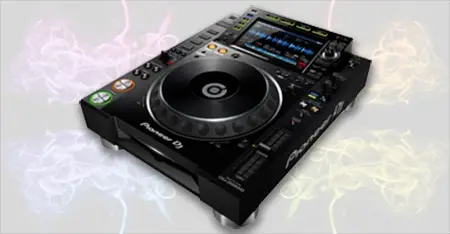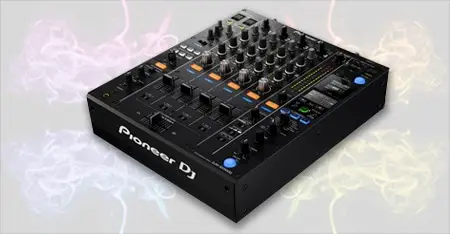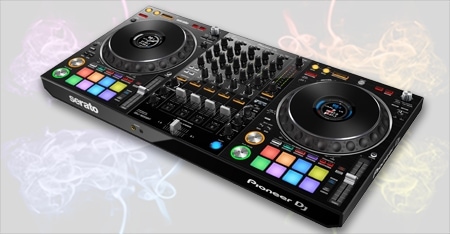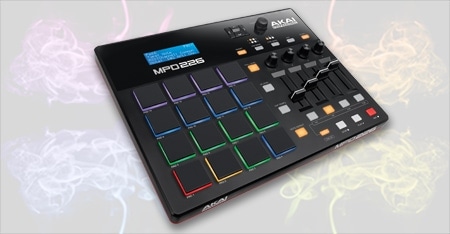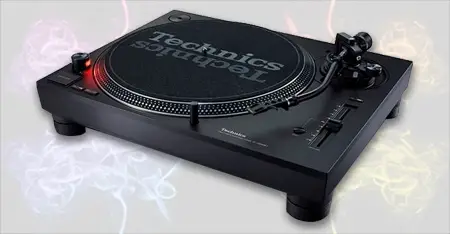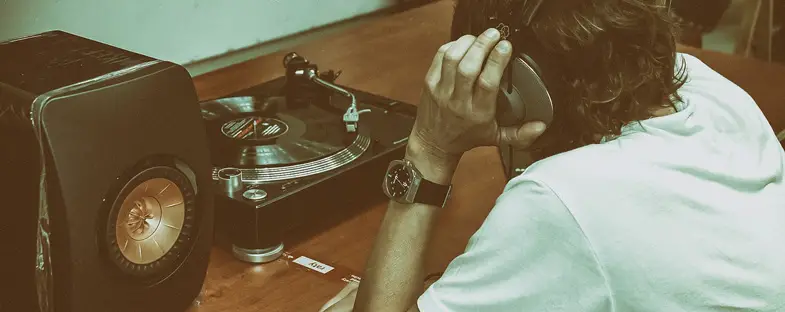
Whether you are getting into DJing or buying a turntable for pleasure sooner or later you’ll hear the terms “belt drive” and “direct drive”. But what is the difference and which one is better? I’ll cover that and more in the ultimate breakdown of Direct Drive vs Belt Drive Turntables…
On a direct-drive turntable, the motor is connected straight to the platter. This increases torque but the motor’s rumble is passed through the platter into the needle. On a belt-drive, the motor is off to the side and connected via a belt. This reduces noise as any rumble is absorbed by the belt.
A Quick Note When Comparing Direct & Belt Drive Turntables
Contents
Which is better comes down to how you’ll be using the turntables and, to some extent, the budget you have. As there are several factors that go into determining whether a turntable is good or not.
Whether it is a belt drive vs direct drive is definitely not a single deciding factor when defining the turntable’s quality. Good sound quality can be affected by things like the build quality and even the needle you use to play records.
Let’s dive into what both belt drive and direct drive mean so that you can make an informed purchase decision.
What is a belt drive turntable?
All types of turntable have to do one thing and that is, well, turn. Otherwise, it’s just a table…
As the name implies a belt drive uses a belt in order to spin the platter and keep the record rotating.
This allows the motor to be placed away from the actual platter, normally to the side. The belt links the motor and the platter in order to keep it rotating.
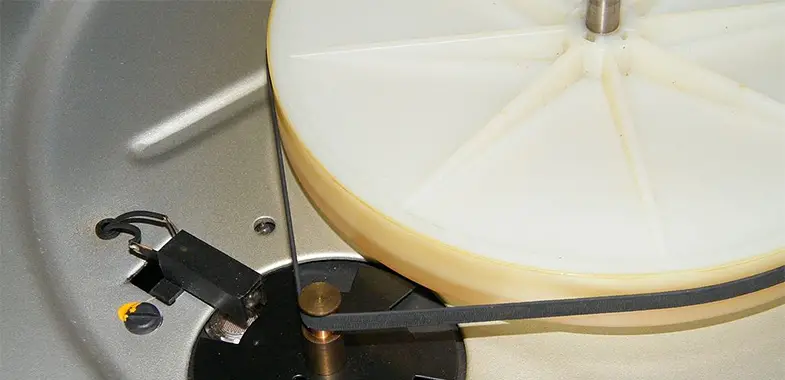
Having the motor moved away from the vinyl platter allows the manufacturer many more design decisions. For example, the turntable can be a lot thinner than if the motor was underneath the platter.
Because the platter is rotated by a belt then it can take a few moments to get up to speed. Although for pleasure listening this doesn’t really matter. Particularly if it has an automatic queuing mechanism that moves the needle over the record and drops it at the start.
A Loose Belt Is a Useless Belt
Although it will take a while, a downside of belt driven decks is that the belt does start to wear. This can cause variance in the speed as the belt gets looser.
This alone virtually writes them off for professional DJing as you cannot rely on them staying at the same speed. This is important in DJing as you need your deck to hold it’s speed exactly as you mix in the second track.
DJs often touch the platter, either while cueing a track or to slow it down while in the mix. Belt-drive decks struggle with this as they take a few moments to recover and get back fully back up to speed.
A plus side of belt driven decks is that they do tend to be cheaper than direct drives.
Belt Drives in the Home
Although belt driven DJ decks exist, they tend to be more common in home music systems, 100% accurate speed is less important.
When you turn the power off, because there is a direct link between the belt and the motor, meaning there is resistance from the platter and it doesn’t spin freely.
Moving the platter with the motor off or reversing its direction is going to cause wear on the belt. There is the risk of stretching the belt or causing it to slip. This will further reduce its speed reliability and the platter rotating at the correct revolutions per minute.
To make a belt drive turntable fully reliable it has to be built to extremely accurate specifications. This is why the cost of a high-end belt drive turntable can run into the thousands.
Pros of a belt drive
- the rubber belt makes it resistant to vibration
- the motor being offset from the platter reduces rumble
- better clarity and purity of sound
- Internal speed corrections are smooth due to the belt
Cons of a belt drive
- lower torque (platter is slower to recover when touched)
- At some point, the belt will need replacing
How long do belts last?
Despite this talk of slipping and speed unreliability, it is worth noting that the belts should last you a good few years before you start to notice any sort of variance.
However, once the belt does start to go then it is only a matter of time before it needs completely replacing. The performance will only degrade the older it gets and the more it is used.
Love DJ gear?
So do we, check out our favorites…
What does “direct drive” turntable mean?
A direct drive turntable has the motor positioned directly underneath the vinyl platter and linked directly. There is no belt or other moving parts between the motor and the platter.
This means all of the energy and force generated by the motor is transferred immediately into the platter.
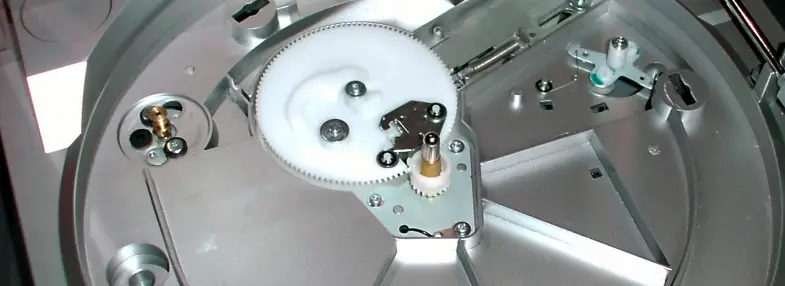
Because of this direct drive turntables get up to speed almost instantly. Then because the motor is powered, the platter will continue to spin freely if you turn it off. This is what happens when you hear a DJ doing the wind-down effect.
As direct drive turntables transfer the force directly to the platter gives them predictable and reliable speed.
Because the speed is steady then, when blending tracks together, you know that both are going to hold their tempo.
Having the motor linked directly to the platter means the full force is transferred and produces higher torque.
Head here to see our recommended direct-drive turntable.
The Benefits of Higher Torque
It is this higher torque that makes the platter get up to speed much quicker and allows decks to be used for scratching and pulls the vinyl back in the correct direction after being manipulated.
Because the platter can spin freely DJs are able to manipulate the record in both directions without fear of damaging their equipment.
This is handy for rocking the vinyl forwards and backs while you are waiting to drop it and is also the reason that DJs who scratch will always use direct drive turntables.

Also because direct drives get back to speed instantly then you are free to tap the platter to make minor corrections while mixing.
This all combines to make reliable mixing, scratching and beat juggling possible.
Belt drives tend to be quite basic whereas direct drive turntables allow you to have a few extra features. Some, like the Vestax Controller One, have buttons to jump to certain speeds, as well as a reverse button.
Although not that many DJ play their songs in reverse of course.
Pitch Control
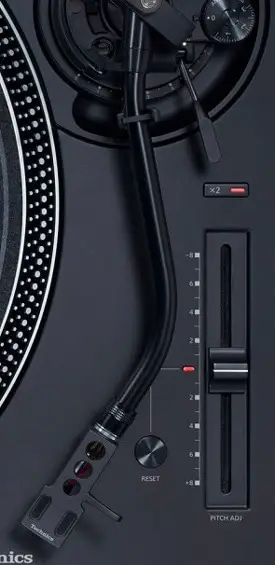
DJs turntables also come with pitch control which allows you to adjust the speed of your track up and down. You can find these on belt driven and direct drive decks.
Again with direct drive then you know the pitch control will be accurate and instantly reflect the speed change in the platter.
It is the features and reliability of direct drives that make them the obvious choice for DJs serious about mixing.
That said, as a DJ, you can definitely learn on belts driven turntables. However, it won’t be long before you find yourself looking to upgrade. There is a benefit to doing this however.
If you can mix on belt drive then you will find it much easier when you switch to direct drives.
pros of a direct-drive turntable
- more resilient to outside force (i.e how heavy the stylus or your touch is on the record)
- more durable, due to no belt
- lower maintenance.
Cros of a direct-drive turntable
- motor vibration noise can pass into the needle
- uses a jolt to fix Speed corrections
To see my recommended turntable, head here.
Turntables For Listening Pleasure
The vast majority of turntables sold are for listening pleasure, despite DJing being such a huge industry. So how does the direct drive vs belt drive turntables debate roll for those looking for just a single turntable in their home?
Again this is in part to do with your aims with your vinyl deck to.
If you are a true music aficionado then you’ll want the music played at the exact tempo intended by the original artist. So a direct drive may still be the way to go, particularly on a lower budget.
That said a true audiophile is looking also looking for clarity in their music. So they don’t want the needle picking up unwanted noise and passing it the speakers.
A turntable needle picks up everything in the grooves and in the platter. To avoid the risk of any motor noise or vibration being passed into the needle you can move the motor away from the platter (via the belt). Otherwise, you can get “rumble” in your playback.
Any rumble from the motor disappears as it moves through the rubber belt.
The Benefits of Suspended Motors
You may wonder here if the direct drive vs belt drive is still valid if the motor is connected to the casing of the turntable in both. Thereby still crating rumble.
However, in high-end belt drives, to ensure that no vibration noise passes through to the platter then the motor is suspended.
This minimizes any chance of passing noise being through the needle and into the speakers.
Although, why suspend just the motor when you can suspend the whole platter??
Is speed stability an issue?
There is a difference in how belt and direct drive turntables regulate their speed
Direct drives monitor the speed constantly to make tiny adjustments and keep them at a steady speed.
Turntables fitted with pitch control that are running at different speeds than normal need extra circuitry to do the monitoring. Direct drive turntables then jolt the platter to fix any variance in speed, although this is rarely noticeable to the untrained ear.
While this will be minimal and unheard by 99.9%, there will be music aficionados that appreciate the subtleties that come from a belt drive.
This is because belt drives are slightly simpler in their construction. Although they also monitor the speed they are a lot less prone to making micro corrections. Especially if they are not a cheaper mode and have a heavy platter.
A high-quality belt drive still keeps a steady speed and is monitoring. The belt means there are much smoother changes in speed. This is due to the slightly forgiving nature of the belt.
This will make the true audiophiles feel they are getting a purer listening experience as the adjustments are less noticeable.
As mentioned at the beginning, the direct drive vs belt drive debate comes down to what you’re hoping to achieve and your budget.
Conclusions
As you have read there are many determining factors in deciding what is a ‘good’ turntable. That is why I have broken out the conclusions into sections to guide you depending on your aim.
Direct Drive vs Belt Drive Turntables: For DJing
If you are going to be DJing with your turntable then it just go with direct drives. Because of the amount that you touch and manipulate the platter while mixing, you will appreciate the quick speed corrections.
Direct Drive vs Belt Drive Turntables: For Listening
If you are buying for listening pleasure, want the music to be as pure as possible and you have a decent budget then you want to be looking at a high-end belt drive turntable.
This is because you only touch the equipment once to start the vinyl and then sit back and enjoy the music exactly as it was intended.
Direct Drive vs Belt Drive Turntables: Price
In the lower budget range then belt drives will save you money. Though arguably a similarly priced direct-drive will be more accurate and longer-lasting, so may equalize any price difference in the long run.
If you are on a budget then look at things like the build quality and stylus/needle quality to see which one wins out for your particular needs.
So ultimately YOU and your needs decide who wins the direct drive vs belt drive turntables argument. Let me know what you decided in the comments, I love getting your input.
And again, remember you can see our recommended turntables here.
FAQs: Direct Drive vs Belt Drive Turntables
Can you scratch on belt drive turntables?
You can but they are not ideal. Because the platter is turned by a belt then there can be a bit of lag in the platter getting back up to speed. This means they are not as responsive as direct drive turntables and there is not a lot that you can do to compensate. Ideally, you need a turntable to get back to speed the instant you lift your hand from the platter. Even if you buy a high-end belt drive turntable that is responsive to begin with, then soon enough the belt will stretch slightly (particularly when used for scratching) which will cause the lag time to increase. When it comes to scratching the ideal if to use direct drive turntables with a high torque motor.
What’s the difference between a record player and turntable?
You will often see these two terms used interchangeably but there do actually mean different things. Technically speaking a turntable refers just to the vinyl and stylus unit itself. By itself it will not be able to produce any sound by itself, they instead require an external amp and speaker system to be audible.
A record player, however, is an all in one unit with a built-in amplifier and speakers. These means they can be transported and used independently. Record players are not designed to be used for DJing as they cannot be linked together through an external mixer. Turntables, however, can have their audio routed into an mixer so that two or more turntables can be used play multiple tracks and construct a full DJ set.
Do they still make Technics turntables?
Yes, Technics do still make turntables but they were taken out of production at one point. The industry standard for years, Technics fell prey to the rise of CD decks due to the ease with which DJs could carry hundreds of CDs vs Vinyl. As a result, Technics were retired from production in 2010, much to the dismay of hardcore DJ fans who campaigned hard, and for many years, for their return of them.
Eventually in 2016 Panasonic (who owns Technics) announced they would be reviving the classic brand. Their latest iteration, SL1200mk7, was released in 2019.
Do vinyl records sound better?
This is a lot down to personal taste and interpretation. In theory, no, both a full-resolution digital copy and a brand new vinyl should produce the same definition of sound. However, it is widely agreed that vinyl tends to sound ‘warmer’ than any other format. This is because there is actually a physical pressing that is being interpreted to create the music with vinyl i.e the needle is reading the grooves of the vinyl and turning it into sound.
After a few plays, the vinyl becomes slightly worn which makes the music sound smoother as the sharpest points are toned down slightly. Of course, after hundreds of plays a vinyl will wear completely and the audio quality will eventually degrade. So at this point, it would be hard to argue that vinyl sounds better than a digital copy (which of course never degrades in quality).
To quote John Peel ‘Somebody was trying to tell me that CDs are better than vinyl because they don’t have any surface noise. I said, ‘Listen, mate, LIFE has surface noise.’
What next?
- Out of ideas for your DJ name? Check this helpful post to choose one that won’t embarrass you later
- Dream of being an EDM superstar? head to our full guide to get you on the circuit in no time!
Sources
- The turntable in the Pitch Control image is a Technics SL-1200MK5
- Belt Drive Turntable without Platter image by Andshel, licensed under CC 3

